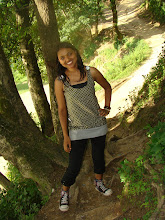 The Rana rulers, who placed Nepal under their feudal yoke for about 100 years until the beginning of the 1950s, feared an educated public. This fear also was held by Prime Minister Chandra Shamsher Rana, who established Tri-Chandra College in 1918 and named it after himself. During the inauguration of the college, Chandra Shamsher lamented that its opening was the ultimate death knell to Rana rule. He personally felt responsible for the downfall of Rana rule, and his words became prophetic for the crumbling of Rana political power in 1950-51.
The Rana rulers, who placed Nepal under their feudal yoke for about 100 years until the beginning of the 1950s, feared an educated public. This fear also was held by Prime Minister Chandra Shamsher Rana, who established Tri-Chandra College in 1918 and named it after himself. During the inauguration of the college, Chandra Shamsher lamented that its opening was the ultimate death knell to Rana rule. He personally felt responsible for the downfall of Rana rule, and his words became prophetic for the crumbling of Rana political power in 1950-51.The founder of the Rana regime, Jang Bahadur Kunwar, later known as Jang Bahadur Rana, decided to give his children an English education rather than the traditional religiously oriented training. In 1854 Jang Bahadur engaged an English tutor to hold classes for his children in the Rana palace. This act tipped the balance in favor of English education and established its supremacy over the traditional type of Sanskrit-based education. In 1991 English education still carried a higher status and prestige than did traditional education.
Jang Bahadur's successor opened these classes to all Rana children and formally organized them into Durbar High School. A brief shift in government education policy came in 1901, when Prime Minister Dev Shamsher Rana took office and called for sweeping education reforms. He proposed a system of universal public primary education, using Nepali as the language of instruction, and opening Durbar High School to children who were not members of the Rana clan. Dev Shamsher's policies were so unpopular that he was deposed within a few months. His call for reforms did not entirely disappear, however. A few Nepali-language primary schools in the Kathmandu Valley, the Hill Region, and the Tarai remained open, and the practice of admitting a few middle- and low-caste children to Durbar High School continued.


No comments:
Post a Comment